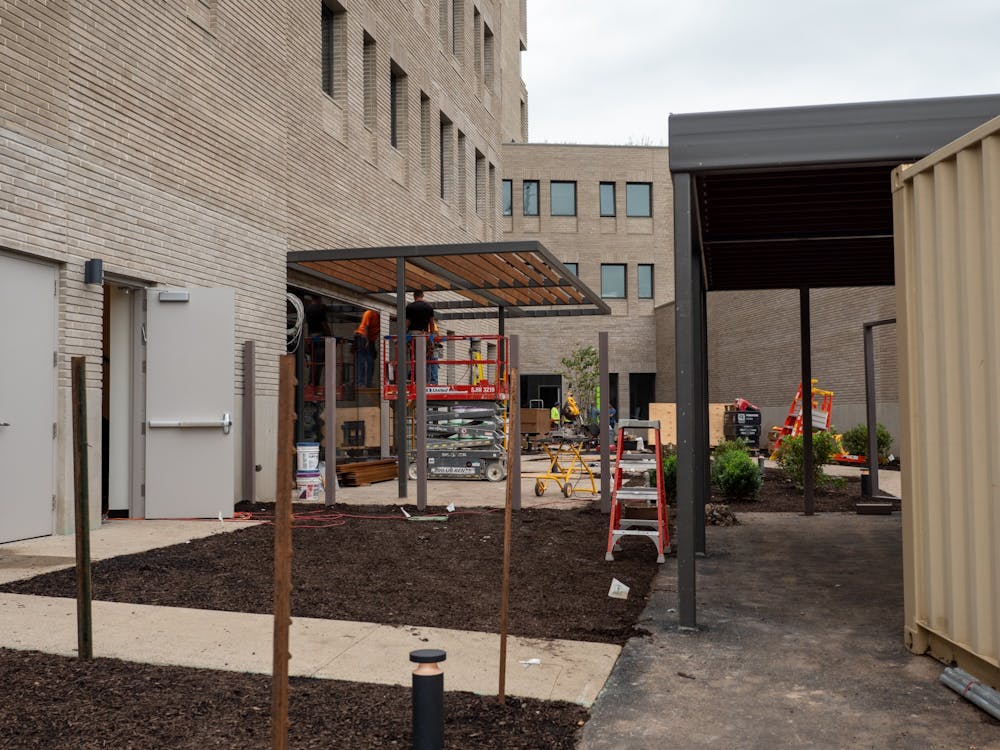Coming to Princeton as a first-year student, I noticed a recurring theme in conversations with juniors and seniors: they valued Princeton’s emphasis on community. Many of the students I talked to valued a deep familiarity with both their physical location and the people who inhabit it. Having a sense of community involves knowing one’s fellow class members and feeling connected to every part of campus. While many have critiqued Princeton as an “Orange Bubble” which students rarely venture out of, within that bubble, the common sentiment was that upper-class students felt a strong connection to their peers.
But with the campus expanding in size, the sentiment of community is fading. As Princeton increases class sizes and campus area, it runs the risk of weakening its small-college-style community. While I agree that Princeton should increase class sizes and welcome more people into our undergraduate community, the acceleration of this process may leave school unity behind.
First, while Princeton expanded the body with two new residential colleges, Yeh College (formerly New College East) and New College West (NCW), college spirit has lagged behind. This trend showed itself in casual ways, like when Yeh College didn’t have a mascot during Clash of Colleges and how NCW still does not have an actual name. There are also more concrete signs that the new colleges are not integrated into the school community: there are fewer sophomores in Yeh, leading to a community which is primarily first-years. For juniors and seniors who didn’t choose to live in the new colleges, Yeh and NCW are totally new communities and were not part of the campus that they once knew and identified with. For example, Ayeda Hamed ’23 said that, “I am mentally accustomed to thinking that campus ends at Poe Field.”
Second, campus construction has also divided us in space, making walking around campus a larger chore. As new construction barricades rise, students are more inclined to spend most of their day on one side of campus if they can, and access to even “central locations” like Frist Campus Center has been impeded. Indeed, the terms “South Campus” and “North Campus” have firmly set in, dividing what once could have been considered a short walk down Elm Drive.
Finally, the effects of the physical barriers imposed by construction are exacerbated by Princeton’s decision to double down on the four-year residential college model. Princeton chose to restrict the room draw process for rising juniors to rooms within their own residential colleges, reversing the tradition of allowing upper-class students to draw into any residential college. Some incoming first-years may struggle with finding a community if they cannot find their core group in their randomly allotted college. By restricting room draw options, Princeton prevents these students from diversifying their communities and limits the cross-college exchange that was once a common part of the campus living experience. Since students can’t move to other residential colleges, each college is becoming more self-contained.
Princeton probably doesn’t mean to harm the sense of campus community. However, their decisions still have real, negative impacts on the ways students navigate their Princeton journey. They alter social expectations (influencing questions such as “should you prioritize friendships within your own residential college?”) and could completely change what someone defines as their Princeton community.
As we get ready to welcome the Great Class of 2027 (the second year of expanded class sizes), we must reflect on the type of college community we are introducing them to. With continuous expansion, we face the risk of losing cohesive campus unity. If Princeton doesn’t take steps to address the waning sense of community, like reforming their room-draw process and fostering more residential college spirit in the newer colleges, all we will be doing is giving first-years a warm welcome into a campus coolly divided.
Aly Rashid (he/him) is a prospective SPIA major in the Class of 2026 from Lahore, Pakistan. He is a contributing columnist and associate editor of the Newsletter for the ‘Prince.’ Outside of the ‘Prince,’ he is Deputy Captain of the Princeton Model UN Team and International Orientation leader at the Davis IC.








